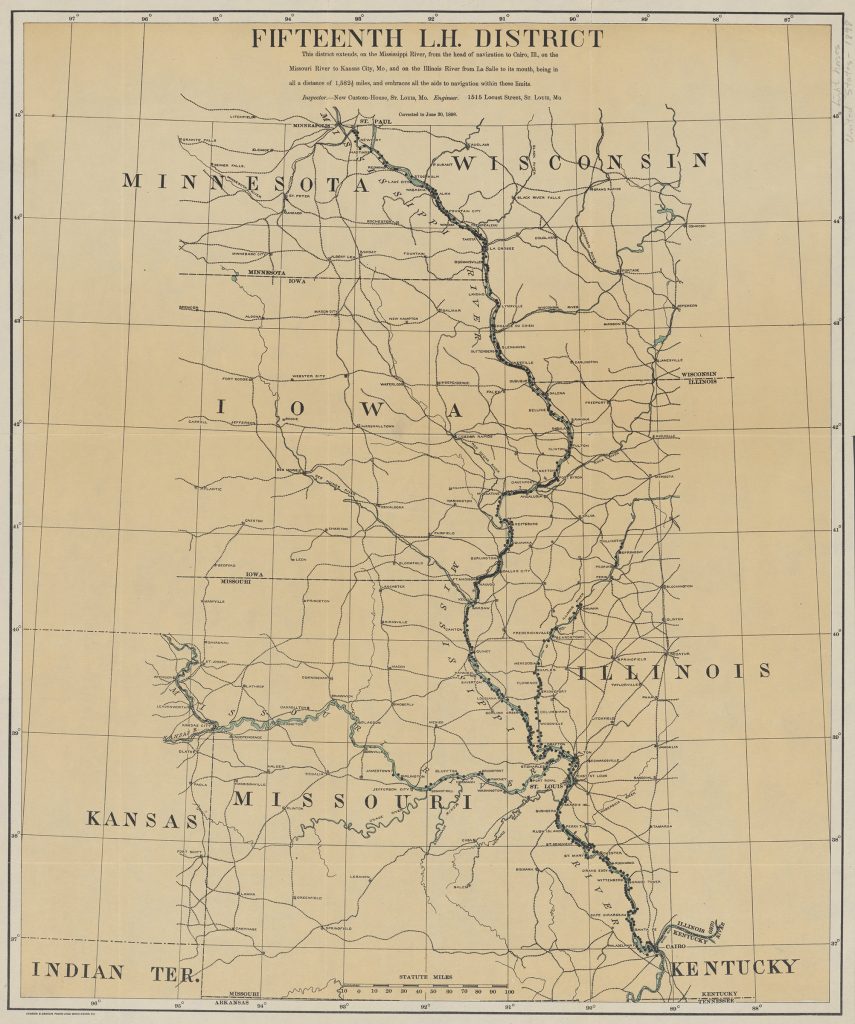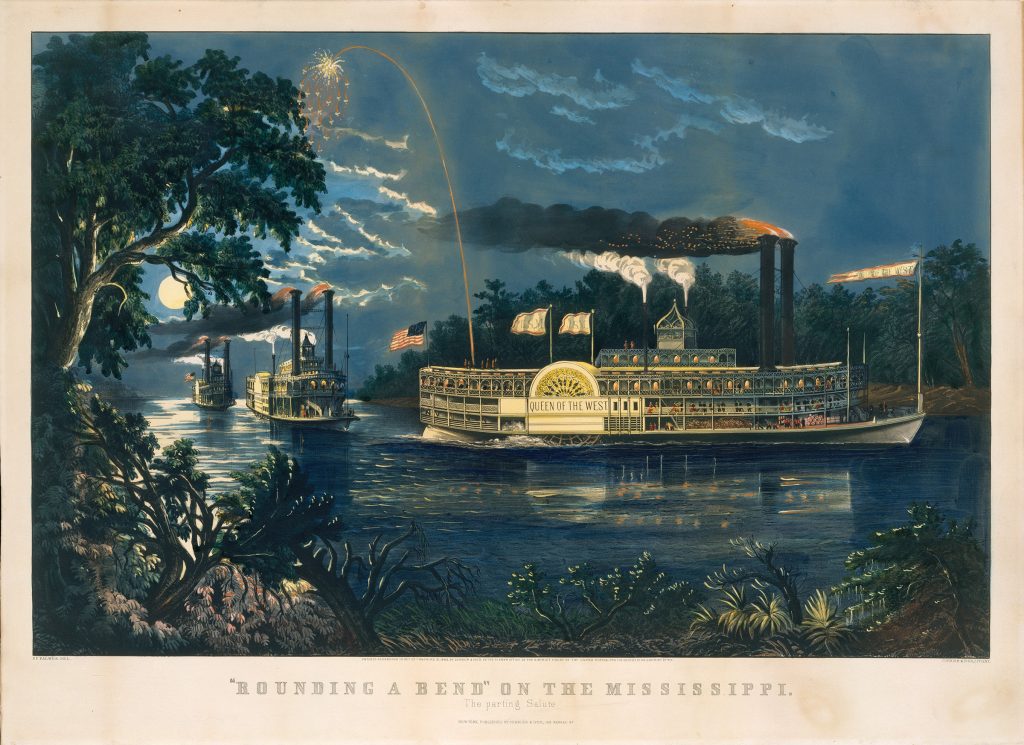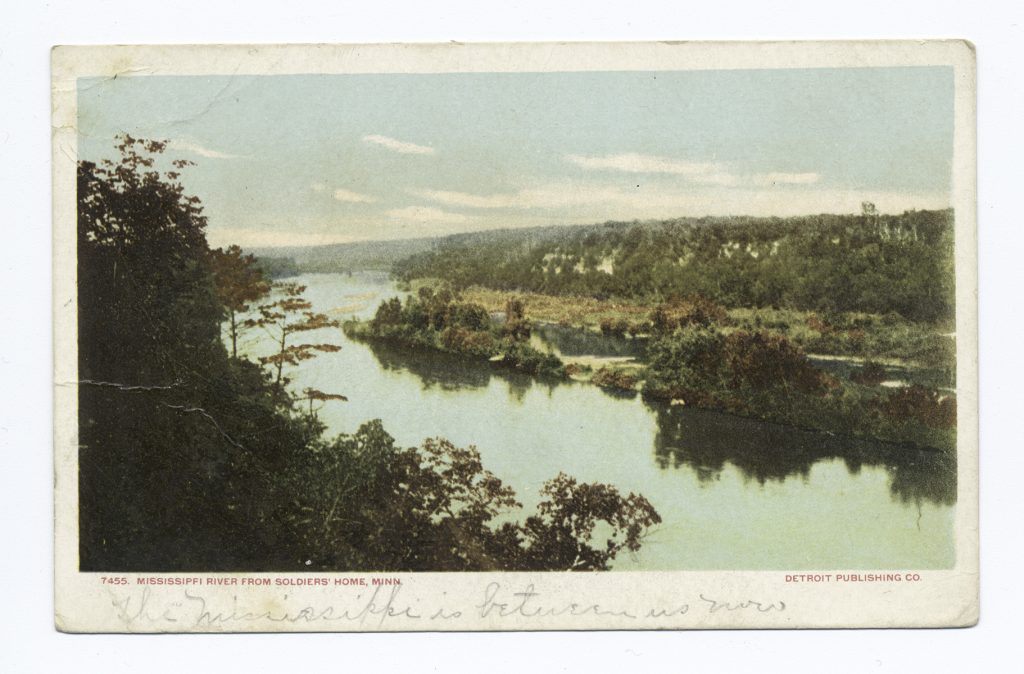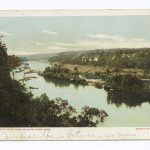
What follows is a case study by Theodore Gracyk, excerpted from Bloomsbury Contemporary Aesthetics, the newest module of the Bloomsbury Philosophy Library. Bloomsbury Contemporary Aesthetics is anchored by a set of exclusive and original case studies contributed by some of the leading voices in aesthetics today, and written to introduce new students to the broad range of topics in aesthetics and the philosophy of art, from interpretation and ontology to appropriation, taste, curiosity, and the aesthetics of confusion. More information on BCA and the Bloomsbury Philosophy Library follows below.
Whenever a member of my extended family visits me in Minnesota for the first time, we invariably take a two-hour drive into the north woods to behold the source of one of the world’s great rivers: the Mississippi. Seeing the river’s headwaters can be a disappointing and even disorienting experience for those who’ve seen the river anywhere south of the twin cities of Minneapolis and St. Paul. Below that point, the river carves out a wide valley as it travels through two hundred miles of rugged, hilly terrain. Then the landscape flattens out and the unobstructed river spreads out even further. The wide Mississippi creates an indelible memory for anyone who’s seen it at the Gateway Arch in St. Louis, or experienced it as it rolls past Memphis, or New Orleans, or at almost any of the other places Americans are most likely to encounter it. And there is not just its wide expanse: the river meanders south for more than 2,500 miles from its origin near the Canadian border before it enters the Gulf of Mexico as the long middle finger of the chicken-footed splay of delta at the southern extreme of Louisiana. It is not for nothing that Johnny Cash, searching for a metaphor for a flood of tears, wrote of the “Big River,” yielding a hit single in 1958.
However, I suspect that its origin point at Lake Itasca has never elicited aesthetic rapture from anyone. Instead, the headwaters almost come across as a deadpan joke of nature. Although the Mississippi drains the fourth largest watershed in the world, it begins as a shallow stream flowing from the north end of an unremarkable lake. Nearly a century ago the Civilian Conservation Corps of FDR’s New Deal “improved” the site by setting a set of large rocks into the lake’s spillover point to enable visitors to keep their feet dry as they walk across the Mississippi. On a hot summer day, many will take off their shoes and stroll directly to the other side. In its natural state, this origin point was so obscured by a marsh of reeds and grasses that early geographers could not find it—and it did not help them that, at its origin, the river flows north toward Canada for its initial forty miles before hooking south toward the Gulf.
Ironically, my car’s Minnesota license plate reminds me that this is the land of 10,000 lakes. Many lakes are just as nice, if not nicer, than Lake Itasca. One visits Itasca only because its pleasant but uninspiring spillover stream is the Mississippi. The headwaters draw admiring tourists only because that other, wider river, a sublime wonder of nature in its might and size and power, is one and the same with the Itasca stream. Tourists visit because of what they already know about the river, and not so much for the sight they’ll see—“is this all there is?” So why visit? Obviously, because knowledge about the Mississippi informs the experience, making it different from and more special than a visit to any similar spillover at any other nearby lake. The experience becomes special, and aesthetically more rewarding, for those who bring the right background knowledge to the visit.
I offer these initial paragraphs to make two points about the aesthetic experience of different kinds of things.
The first point is that many people look to art more than nature as their source of aesthetic reward. The arts are typically sorted into two kinds: temporal and spatial. Some things, such as a movie or a piece of music, are only experienced by being experienced as temporal objects unfolding in time. Other arts involve the creation of (relatively) static objects such as paintings and statues. The viewer can decide how much time to spend with the thing, but where you cannot honestly claim to have watched Hitchcock’s Psycho if you turn it off before the shower scene, you can say that you’ve seen the Mona Lisa after spending thirty seconds in front of it—which is more time than the average tourist will spend with any other painting in any other art museum. However, there is a third case, most often encountered with natural things. These things lack the sharp boundaries that typify most art—we know when the movie begins and ends, and we know that the Mona Lisa ends at the edge of the canvas. However, many natural things are so large that there is no one way to view them. What is more, many are better understood as an ongoing process than as a static thing. A giant sequoia redwood may be approached as a static object, but part of the point of visiting it is its age, not just its size. In traditional Japanese thought, rivers are frequently treated as the paradigm of aesthetic experience, and of the transience of anything and everything: “The flow of the river is ceaseless and its water is never the same. The bubbles that float in the pools, now vanishing, now forming, are not of long duration” (Kamo No Chomei quoted in Bell).

My second point relates to the role of background knowledge in aesthetic experience, especially experiences of natural things and processes. In these cases, there is seldom anything like objective closure to the thing and our experience of it. There is the place and time that we begin our observation, and a place and time we stop. But the thing is there before we are there, and it will continue on afterwards, and all the while it will (typically) extend out beyond the limited area that we can observe. The human experience of natural things, and thus our aesthetic experience of those things, is woefully partial, selective, and incomplete. And so the experiential shortfall must be corrected and enhanced by further information. To put it more technically, the aesthetic encounter is of little value unless the direct experience receives cognitive supplementation and guidance. This supplementation is clearly required on the part of those who make the trip to the Mississippi headwaters. There is no point to visiting that tepid stream at Lake Itasca unless one already has some appreciation of how big that big river is and lets that knowledge inform the direct experience of the headwaters. In other words, a positive and appreciative response requires appropriate cognitive framing.
To complicate matters and bring them into better focus, let us consider a description of experiencing the Mississippi in Mark Twain’s Life on the Mississippi (1883). The book is an autobiographical account of the long process of becoming a steamboat pilot in the 1850s. The following paragraphs are heavily edited, and so I urge readers to locate the full text, which is easy to find on the internet. Twain’s description reverses the dynamic of my example, which showed how cognitive framing is required to enhance an encounter with nature. Twain’s autobiographical account of his own experiences with the Mississippi shows that cognitive framing does not necessarily enhance an experience. It can also erode or negate the aesthetic experience of a natural entity such as the Mississippi.
The face of the water, in time, became a wonderful book—a book that was a dead language to the uneducated … The passenger who could not read it was charmed with a peculiar sort of faint dimple on its surface (on the rare occasions when he did not overlook it altogether); but to the pilot that was an italicized passage; indeed, it was more than that, it was a legend of the largest capitals, with a string of shouting exclamation points at the end of it, for it meant that a wreck or a rock was buried there that could tear the life out of the strongest vessel that ever floated. It is the faintest and simplest expression the water ever makes, and the most hideous to a pilot’s eye. …
Now when I had mastered the language of this water and had come to know every trifling feature that bordered the great river as familiarly as I knew the letters of the alphabet, I had made a valuable acquisition. But I had lost something, too. I had lost something which could never be restored to me while I lived. All the grace, the beauty, the poetry, had gone out of the majestic river! I still keep in mind a certain wonderful sunset which I witnessed when steamboating was new to me. …
I stood like one bewitched. I drank it in, in a speechless rapture. The world was new to me, and I had never seen anything like this at home. But as I have said, a day came when I began to cease from noting the glories and the charms which the moon and the sun and the twilight wrought upon the river’s face; another day came when I ceased altogether to note them. (Twain 1883: 119-21)
I wish to note that two very different issues can be extracted from my contrasting examples. First, there is a psychological issue. How much and what kind of information is required to transform the pleasant but relatively humdrum viewing of the headwaters into a special experience? Or, conversely, to change “speechless rapture” into a concerned wariness? Are these conversions inevitable once we possess a certain amount of information, or can an individual resist or control their response? Second, there is a philosophical question. Is there a right way and a wrong way to respond aesthetically to nature and things in nature? And of course, it’s the second, philosophical question that will occupy the rest of this essay.
The undercurrent of Twain’s reminisce is that positive aesthetic experiences are a good thing and therefore it’s a shame that he lost his aesthetic appreciation for the river as he trained to be a steamboat pilot. Twain’s experience must be balanced against my example of visiting the headwaters for the first time, which is a case of factual knowledge creating the (hopefully) positive experience. It seems to me, therefore, that only a short-sighted hedonist could suppose that one should remain ignorant where ignorance improves the experience. That is, only someone who says that positive aesthetic experiences are self-justifying—that they are always and necessarily desirable—will treat the positive or negative quality of the experience as the determining factor in whether (or how much) information to build into the cognitive frame. They say that ignorance is bliss, but part of Twain’s point is that blissful ignorance sinks steamboats. To offer a more contemporary example, I like a good hamburger every now and then, but I also think people should be aware that many fast-food hamburgers come from South America and that more and more of the Amazon rainforest is destroyed every year to expand cattle production to produce those burgers. If knowing that makes cheap meat less palatable, then that’s a good reason for providing consumers with that information, rather than a reason to look the other way. (The argument I’ve just given paraphrases Marcia Eaton.)
Consequently, philosopher Allen Carlson argues that argues that aesthetic experiences of nature and things in nature should always be informed by basic scientific facts about the kind of thing we are experiencing. Furthermore, possession of such facts is required to justify an individual’s aesthetic response to nature. There are better and worse responses, but a response counts as better if it is the typical response of someone who is informed about the kind of thing they’re experiencing. And that also extends to disappointing or neutral responses. They are sometimes the better response. It is better (in the sense of being justified) to have a less positive aesthetic response if that’s the response generated by a better-informed cognitive frame. For example, someone who thinks Monarch butterflies are beautiful because they’re delicate creatures has a defective response. In contrast, someone who finds them beautiful because they understand that their design makes them extraordinarily strong and resilient has a justified response. (Monarchs migrate, and those wings allow them to travel a thousand miles or more.)
From Carlson’s perspective, Twain’s change of attitude puts him in a more justified position as he moves from a superficial appreciation of beauty to a more complex and wary “reading” of the “book” of the river. This also fits with the point that I made above about Lake Itasca. The Mississippi headwaters are basically indistinguishable from the same sort of lake overflow in many other nearby lakes. Nonetheless, an informed visitor is justified in having a more complex response at Itasca than at the other lakes. It is complex in having two stages. I think most visitors are initially disappointed. As I said at the outset, it almost feels like nature is making a joke or playing a prank. This response comes from knowing what the river will become downstream, and so the initial letdown is justified in this case, because one arrives expecting something special. However, the same response of disappointment would make no sense—and so would be unjustified—at a hundred other similar sites. Then, for most visitors to Itasca, there is a second, positive stage of the experience. Knowing what it is, and knowing anything at all about rivers, most visitors will realize that any initial disappointment was due to false expectations. Of course, it doesn’t look like much! What could one have expected? This is simply how rivers are! And this knowledge of the kind of thing one is dealing with (river headwaters) then combines with knowledge about this specific river (it’s the fourth largest watershed, etc.), and one can then respond more positively to this small stream, appreciating it in a way that one cannot appreciate all those nearby streams that merely feed some local marshland. Just as one can respond to a Monarch butterfly with a more complex and more justified appreciation when one connects the visual with the background information, one can admire the one stream in a way that’s not appropriate for the others.
Other philosophers will now call me out on a point that is suppressed in Carlson’s account and in the defense I have just given it. Mere knowledge of the facts is not sufficient to generate a new or different response. The enriched aesthetic response also depends on the operations of imagination. One has to imagine the distance of the butterfly’s journey relative to its small size, and to imagine how the headwaters gradually become the great river that ends up at the Gulf of Mexico. Why do we say that one imagines it? Because, short of getting into a canoe and making the journey, the connection of the headwaters to the bigger river only takes place in the mind’s eye. Similarly, Twain’s transformed attitude to what was formerly beautiful is due to his new capacity to imagine how the steamboat will respond to the hidden shoal, and to imagine how hard it will be in the future to judge the boat’s precise location once the dead tree is gone.

Considerations of these sorts lead Emily Brady to conclude that we should not connect justification so closely to possession of factual information about nature. Aesthetic responses also depend on imaginative engagement with natural objects. In other words, Carlson puts too much emphasis on cognitive framing, whereas aesthetic appreciation is better understood as an integration of imaginative, emotive, and cognitive processes. People should be free to let their imaginations respond freely to nature, and their aesthetic responses should not be evaluated so narrowly in relation to the accuracy of their cognitive frame.
But I confess that my sympathies align more with Carlson than Brady. Suppose I can no longer bear the two hours it takes to get to Lake Itasca, and so I drive my next out-of-state visitor to a lake with a similar streaming outlet, but one that’s much nearer to home. I invite my guest to wade across the Mississippi while (falsely) pointing out how it flows north instead of south, explaining (falsely) that it turns south at a point farther north. And so on. In other words, I engage the visitor in an extended guided session of imagining that they’re visiting the headwaters of the Mississippi. Why not? If you’ve seen one Minnesota headwaters, you’ve pretty much seen them all!
But that would be a mean and perhaps unforgivable trick to play for the sake of a shorter drive. To adapt an argument from Carolyn Korsmeyer, the gullible tourist may have a rewarding experience, but very few of us want an imaginary encounter when the real thing is just a little further down the road. If someone wants to see the headwaters of the Mississippi, it’s because they have some prior appreciation of that thing and not some other. The point of the visit isn’t merely to have a positive experience in nature. The point is to have a positive experience of that very river. I want to see the river that Mark Twain and Johnny Cash wrote about, not some creek that happens to be the same kind of natural phenomenon.
Bloomsbury Contemporary Aesthetics is the newest module of the Bloomsbury Philosophy Library, which provides subscribers access to primary source material, newly-digitized modern sources, secondary literature, exclusive articles, encyclopedia entries, and curated image banks.
Aesthetics for Birds readers can get temporary access to the Bloomsbury Philosophy Library at www.bloomsburyphilosophylibrary.com with these credentials:
User: ASfB-BPL
PW: bcalaunch22
Theodore Gracyk is the author of a number of books on philosophy of art and music, including On Music (Routledge 2013). He co-edited The Routledge Companion to Philosophy and Music (Routledge 2011) and was co-winner of the 2002 Woody Guthrie Prize for I Wanna Be Me: Rock Music and the Politics of Identity (Temple University Press, 2001). He also conducts research on the history of aesthetics and has published on David Hume, Thomas Reid, and Edward Hanslick, among others.



April 11, 2022 at 5:02 pm
RE “They say that ignorance is bliss, but part of Twain’s point is that blissful ignorance sinks steamboats. ”
Typically Twain was far ahead in his perceptions of reality compared to nearly everyone else. So, yes he’s right on target here too.
Ignorance of lies and deceptions (=most mainstream news and establishment decrees) is bliss because exposing yourself to that is self-propagandization.
Ignorance of truths is not, or only temporarily or rarely, bliss because it is ultimately self-defeating.
The FALSE mantra of “ignorance is bliss”, promoted in the latter sense, is a product of a fake sick culture that has indoctrinated its “dumbed down” (therefore TRULY ignorant, therefore easy to control) people with many such manipulative slogans.
You can find the proof that ignorance is never bliss (only superficial fake bliss), and how you get to buy into this lie (and other self-defeating lies), in the article “The 2 Married Pink Elephants In The Historical Room –The Holocaustal Covid-19 Coronavirus Madness: A Sociological Perspective & Historical Assessment Of The Covid “Phenomenon”” …. https://www.rolf-hefti.com/covid-19-coronavirus.html
“Blissful” believers in “ignorance is bliss” — blissfully stupid people — are nearly always self-destructive indifferent ignoramuses and/or members of herd stupidity…
“2 weeks to flatten the curve has turned into…3 shots to feed your family!” — Unknown
“If ‘ignorance is bliss’ –there should be more happy people.” — Unknown